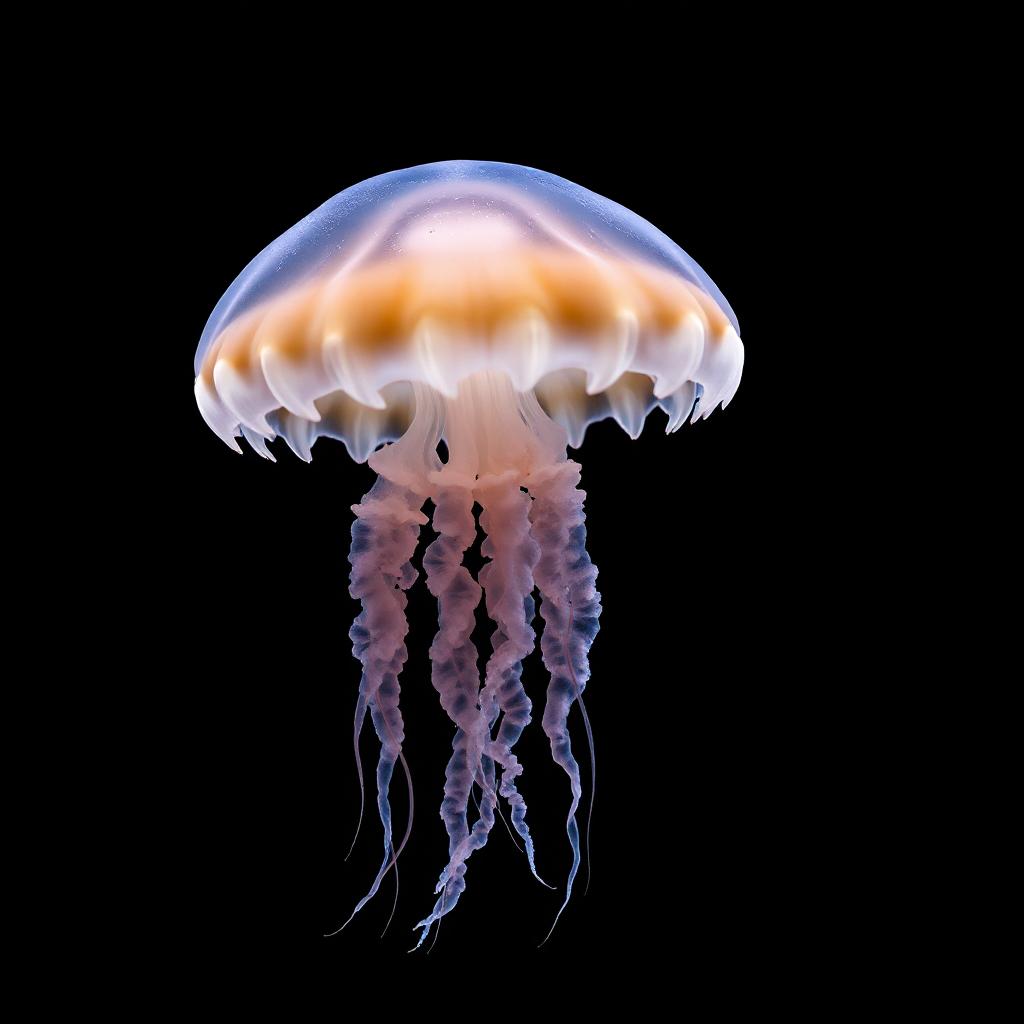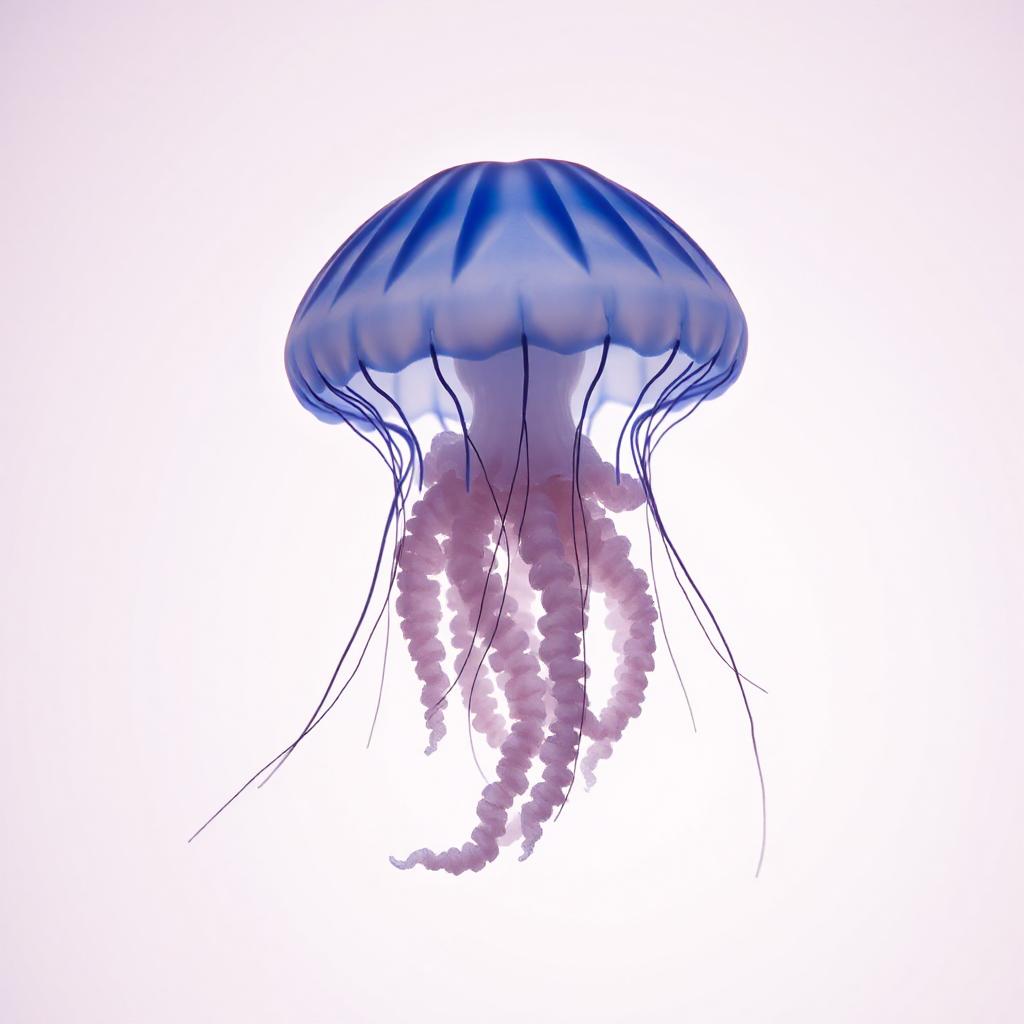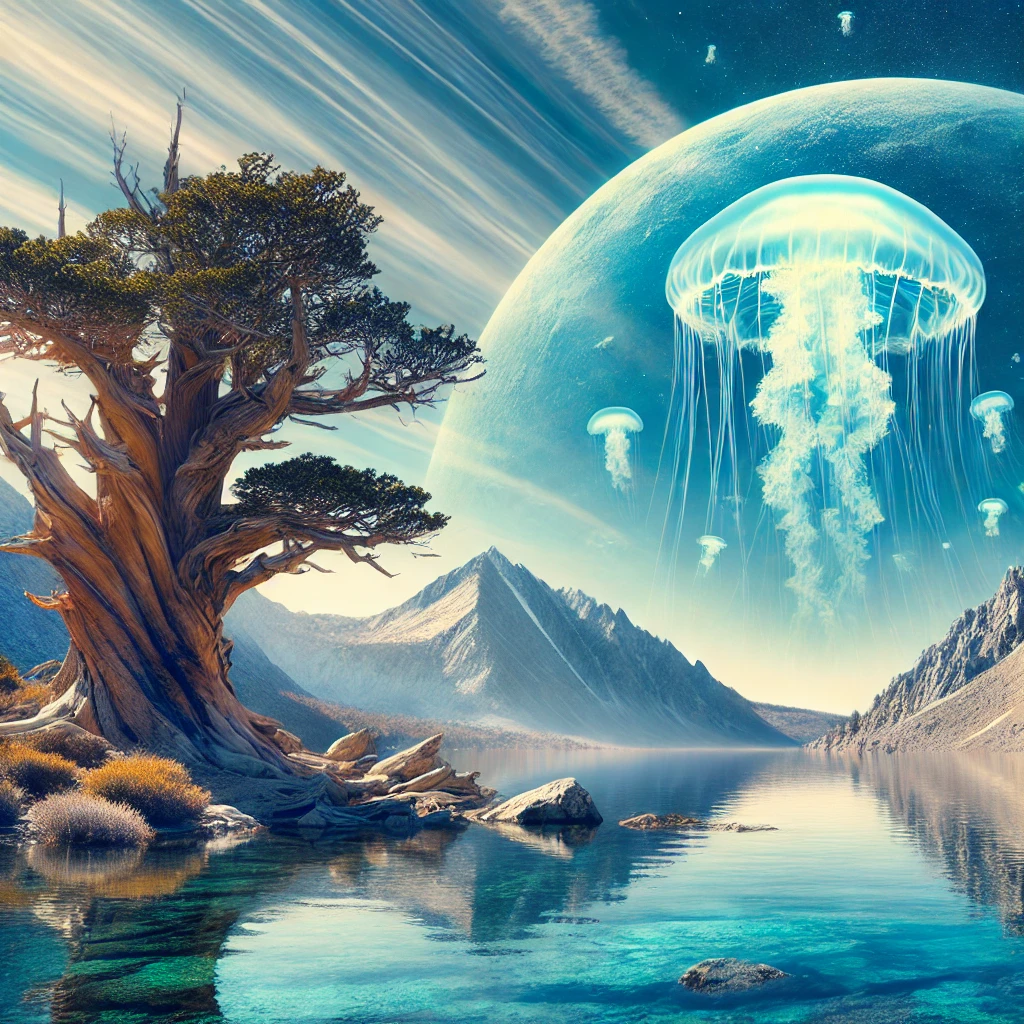Estimated Reading Time: 2 min
The immortal jellyfish, scientifically named Turritopsis dohrnii, is a small jellyfish species famous for its extraordinary ability to potentially live forever under ideal conditions. Originally discovered in the Mediterranean Sea, it can now be found in oceans worldwide.
Who is the immortal jellyfish?
The Turritopsis dohrnii:

- Size: Very small, only about 4.5 mm in diameter (smaller than a fingernail).
- Appearance: Transparent, with a bell-shaped body and bright red internal structures (stomach).
- Habitat: Warm, temperate, and tropical ocean waters, often near the surface.
What makes the immortal jellyfish special?
The Turritopsis dohrnii is unique because of its biological immortality, meaning it can reset its life cycle indefinitely. Here’s why it’s so extraordinary:
- Reverting to Youth:
- Most organisms grow, age, and eventually die. However, the immortal jellyfish can reverse this process.
- When stressed or injured, it transforms its mature adult stage (medusa) back into its juvenile polyp stage, effectively restarting its life.
- Transdifferentiation:
- This process allows the jellyfish to reprogram its cells, turning them into different types of cells. This is akin to a butterfly turning back into a caterpillar.
- No Aging:
- Unlike humans and most animals, it does not experience senescence (aging). Instead, it continually regenerates itself, theoretically allowing it to live forever.
- Global Adaptation:
- Though originally found in the Mediterranean, it has spread worldwide, surviving in various ocean environments.
Why is it important?
The immortal jellyfish has significant scientific and symbolic importance:
- Research in Aging and Regeneration:
- Its ability to reverse aging offers potential insights into regenerative medicine, combating aging, and treating diseases.
- Symbol of Resilience:
- The jellyfish embodies nature’s capacity for survival and adaptation.

In summary, the immortal jellyfish is an extraordinary creature that challenges our understanding of life and death, making it a fascinating subject for science and a marvel of the natural world.

